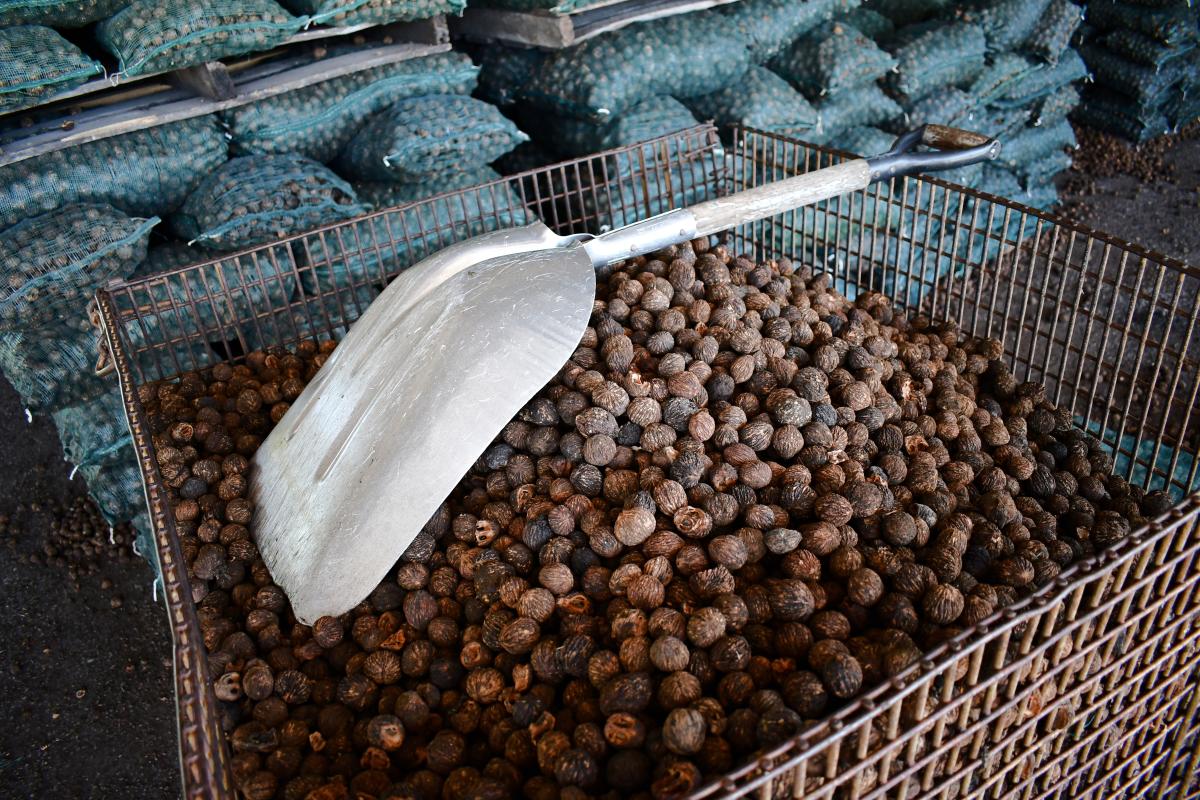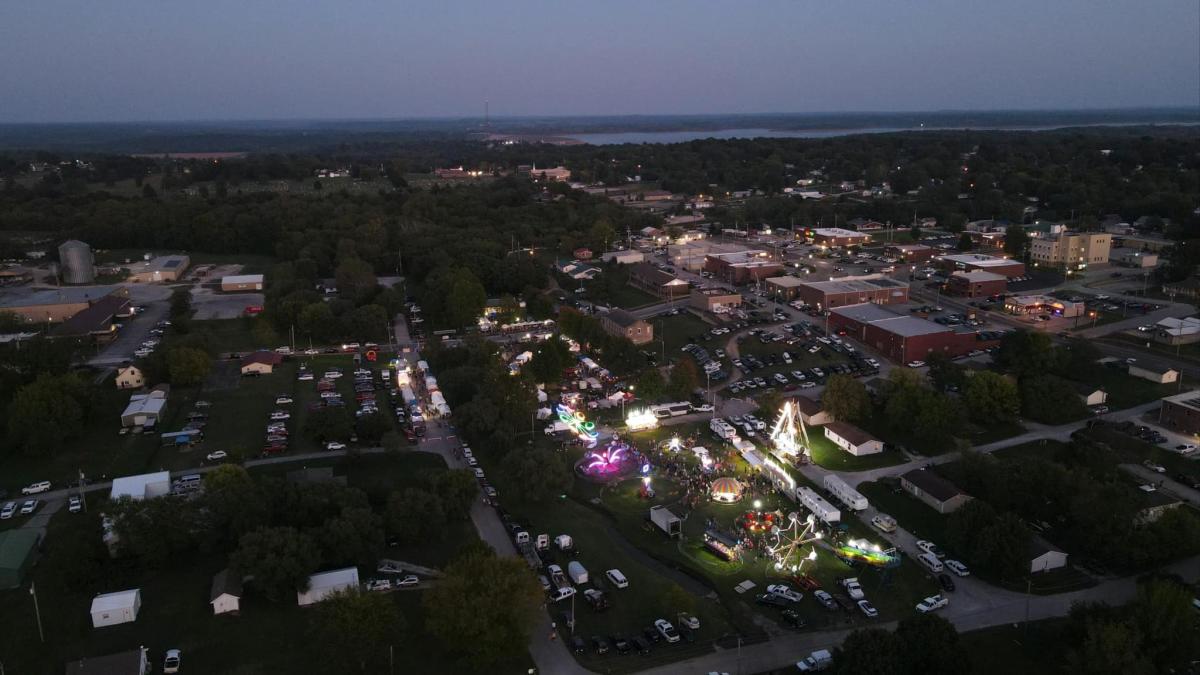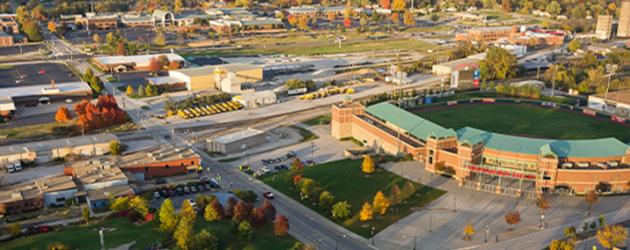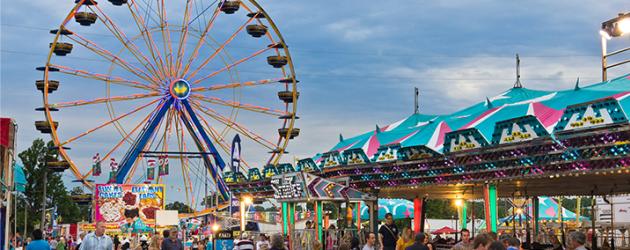Ozarks culture and community connections do grow on trees in Stockton, where the town’s annual Black Walnut Festival has been a tradition since 1961.
Held annually each September, the festival is linked to black walnuts, which is a significant part of the town’s heritage. Hammons Black Walnuts, which supplies black walnuts across the country, began there in 1946.
The quick success of the company and a dose of marketing savvy led the festival to be named in honor of the nut just a few years later. It’s a statewide honor: In 1990, the black walnut was officially named as Missouri’s official state tree nut.
Today, the Cedar County festival has become a tradition that draws people both for the first time and forever.
“From the parade on Saturday to the carnival that night it was small town fun and atmosphere at its finest,” touted one visitor on Facebook.
Ozarks Black Walnut Heritage
 Black walnuts are collected across the Ozarks by pickers, who take them to hulling stations. Those hulled nuts are eventually taken to Stockton, where they wait – like these ones – to be shelled and processed.
Black walnuts are collected across the Ozarks by pickers, who take them to hulling stations. Those hulled nuts are eventually taken to Stockton, where they wait – like these ones – to be shelled and processed.
Black walnuts – which differ from English walnuts – are prolific throughout the Ozarks.
“The nut has a variety of uses,” notes the Missouri Secretary of State’s website. “Its meat is used in ice cream, baked goods and candies. The shell provides the gritty abrasive used in metal cleaning and polishing, a sealant for oil well drilling, an additive to paint products and as filler in dynamite.”
Today, hullers throughout the region and beyond receive nuts brought by community members – from lawns and fields – which eventually end up in Stockton for processing before they’re shipped all over the country.
That wasn’t always the case.
Back in the 1940s, Ralph Hammons owned a grocery store in Stockton, and in those days local stores often purchased goods from neighbors. In the 1940s, he decided to buy black walnuts. They’d collected and shipped them elsewhere previously, but when the company they worked with closed, he decided to see if they could process the nuts themselves.
“They had a plant in Staunton, Virginia, that cracked nuts — but they didn’t have any nuts in the local area,” says Dwain Hammons, his son. “The next year, that company closed their doors and Dad thought that if they just processed nuts here in Stockton, and offered a market for people to pick up the nuts (they would be successful). It was a wasted crop otherwise.”
The effort was a success, and Hammons’ business began to grow. When it was time to rethink a community festival formerly known as “the Fiesta,” it was named in honor of the native crop.
Safe to say, that first event in 1961 was a success.
“The first Black Walnut Festival to be held in Stockton last week was a success in every respect, and the success of the event far exceeded the fondest hopes of those who were engaged in the promotion of the festival,” noted the Cedar County Republican.
Festivities that year included a parade – led by a color guard of World War I veterans – a queen contest, 75 black walnut exhibits, a display by the Conservation Commission (today’s Missouri Department of Conservation) about the different nuts that grow in the state, as well as information from Hammons on the walnut industry.
By the next year, Governor John Dalton proclaimed a “Missouri Black Walnut Week” across the state “to call attention to the growing importance of the black walnut industry to Missouri farmers,” noted the Sunday News and Leader in 1962.
There was a time in the past when another industry – cheese – was also a focus of the festivities. When the local cheese plant ultimately closed, the festival’s focus went back to black walnuts. It’s such a deep tradition that the festival was held in 2003, the year a tornado nearly destroyed the town just a few months earlier.
The Festival’s Impact Today
 The Black Walnut Festival includes activities such as a carnival, tours of Hammons Black Walnuts, music, parades and more. (Courtesy of the Black Walnut Festival)
The Black Walnut Festival includes activities such as a carnival, tours of Hammons Black Walnuts, music, parades and more. (Courtesy of the Black Walnut Festival)
The focus of the Black Walnut Festival is fun, but it’s also making a difference in the community. Since 2015, the annual event has been led by the Stockton Lake Sertoma Club, which has a local focus of helping youth in their community.
“It has grown exponentially in the time that we’ve had it,” says Maranda Spangler, vice president of the Stockton club. “Our entire premise from the word ‘Go’ was to support the youth in our community.
“If we can advance them in some shape or form, that’s what we want to do.”
While many activities at the festival are free, the funds raised through sponsorships and vendor fees help provide resources for kids and youth. That was a mission when the club took over the event from other local planners.
“It funds these youth all year long,” Spangler says, giving examples of times when there isn’t money available for trips or experiences.
“You want to go to Washington D.C. for a class trip? Yes,” she cites as a possible example.

The 2024 festival begins on Thursday, Sept. 26 and runs through Saturday, Sept. 28. A full list of festivities may be found here, but a few highlights include:
-
Black walnut exhibits
-
Community quilt and art display
-
Tours of Hammons Black Walnuts
-
Terrapin races
-
Parades (including a youth-and-pet parade and another that’s a mile long and includes many marching bands)
-
Queen contest
-
Carnival and activities for kids
-
Lots of music
 Terrapin races, carnival rides, and a youth-and-pet parade are a few of the fun options for kids. (Courtesy of the Black Walnut Festival)
Terrapin races, carnival rides, and a youth-and-pet parade are a few of the fun options for kids. (Courtesy of the Black Walnut Festival)
There are many vendors – none of which duplicate, Spangler says – and a nut roll. The latter isn’t fueled by edible nuts, but by chances to win that one can purchase in advance. Ultimately, the funds raised through the effort go to Tiger Tasters, the school’s “backpack” program to help provide additional food for kids in need.
"We load up a tractor bucket with ‘black walnuts’ that are numbered and release them down the hill,” notes the festival’s Facebook page. “If your nut is chosen then you win one of the many prizes that have been donated. Prizes range from fire pits, coolers, cash, and 100s of dollars worth of gift cards.”
Spangler likens it to the game “Plinko” that was made famous on “The Price is Right” game show. On the show, contestants drop chips into a giant board with pegs; where the chips fall results in how much cash they get. In Stockton, that prize might be a canoe.
That fun results in impact: Thirty-or-so members lead festival planning, raising more than $180,000 for community causes in 10 years.
As a post on the festival’s Facebook page put it, “The BWF allows us to give back all year to the youth in the community, and your donations would be greatly appreciated!”
Want to learn more?
Click here to find out more about Stockton’s Black Walnut Festival.















